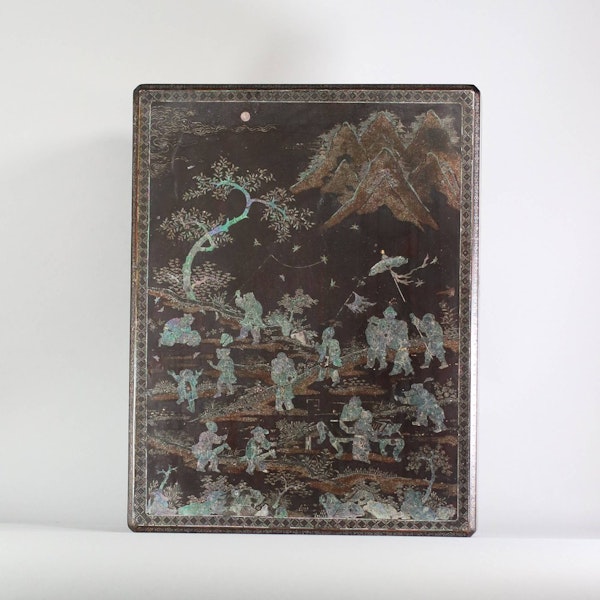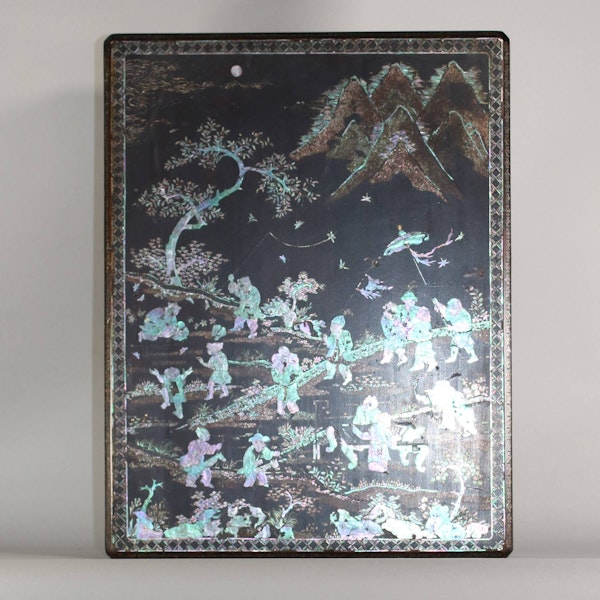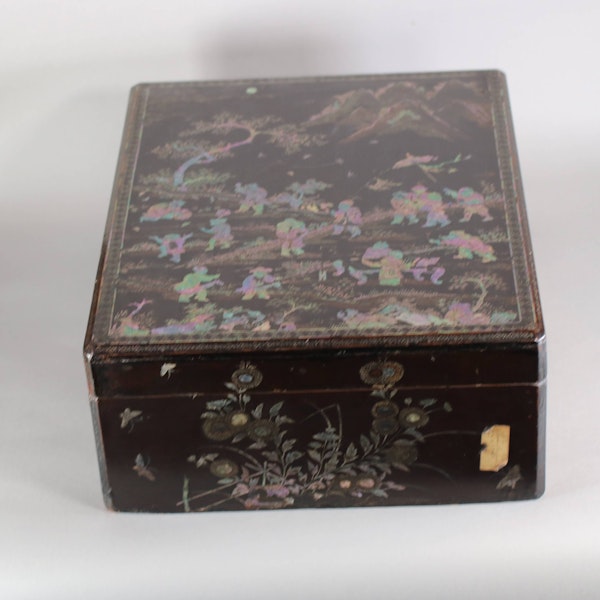A lac-burgaute box and cover, Qing dynasty, early 19th century
A lac-burgaute box and cover, Qing dynasty, early 19th century
POA
Description
A lac-burgaute box and cover, Qing dynasty, early 19th century, of oblong shape, the top finely inlaid with mother-of-pearl and gold foils against a black lacquer ground with children playing and engaged in various pursuits amongst flowering trees and rockwork, in a landscape with mountains and a full moon visible in the background all within a diamond-pattern band to the rim, the sides inlaid with designs of flowers and flying insects.
Notes:
The scene depicted here is an adaptation of the ‘hundred children’ motif which was popular in Chinese art from at least the 10th century and which also appears frequently in later Korean and Japanese paintings and ceramic design. The abundance of children represents not only the hope for the birth of many healthy offspring (generally sons), but also the wish for their success in later life: the children are frequently shown engaged in adult pursuits which relate to the manner or activities of successful scholars, warriors, bureaucrats or courtiers. Such items would have been auspicious gifts or objects for display at New Year or during the succession of ceremonies and festivities marking a newborn baby’s first thirty days, one hundred days, and year. Lac burgaute, an Asian technique of decorating lacquer ware with inlaid designs, dates back to the Ming dynasty (1368 - 1644), when it was known as lo tien. It was also popular in Japan, where it is referred to as aogai. The French name commonly used today derives from burgau (sea-ear, referring to the iridescent shell nacre of the abalone traditionally used) and laque (lacquer).
| item details | |
|---|---|
| Material and Technique | Lacquer inlaid with mother-of-pearl and gold foils |
| Origin | Chinese |
| Period | 19th Century |
Product REF: F17






